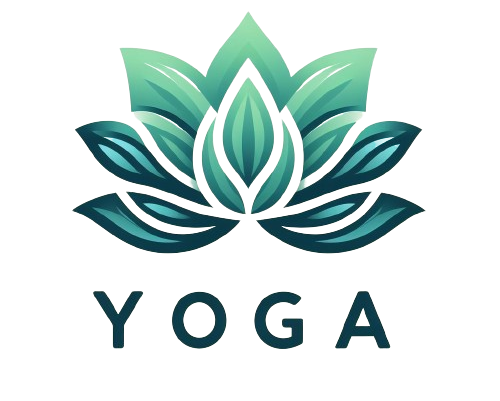If you’re nosing around for a unique way to shake off those extra pounds, guess what? Yoga might just be your golden ticket. You might be wondering, “Yoga, really? But isn’t that just a bunch of stretching? Well, prepare to have your mind blown.
Building Muscle
Yoga, often undervalued for its muscle-building capabilities, offers an extensive array of poses, ranging from the empowering warrior stances to the core-strengthening planks, that clandestinely contribute to muscle development. As you immerse yourself in the tranquility of a practice, maybe even catching a glimpse of the sun setting beyond your window, it’s easy to overlook the vigorous workout your muscles are silently enduring. Each pose, while seemingly serene and meditative, demands a significant amount of muscle engagement and control. This engagement is important, it creates and tones muscle fibers across the body, transforming the act of holding a pose into a powerful strength-building exercise. The beauty of yoga lies in its ability to disguise intense physical effort with peacefulness and grace, making it a uniquely effective method for enhancing muscle mass. As your muscles grow and strengthen, your body becomes more efficient at burning calories, during your yoga practice and even in moments of rest. This increased metabolic rate is a subtle impactful benefit of yoga, silently boosting your fitness level and contributing to a leaner physique, all while you’re absorbed in the calm of your practice. True to its nature, yoga proves to be a subtle and potent tool in the quest for physical health, making the act of building muscle a serene yet powerful endeavor.
Flexibility

The concept of flexibility might not directly connect with the goal of weight loss. This underappreciated fitness component is important in enhancing overall physical performance, which can significantly aid in shedding unwanted pounds. Being supple and bendy opens the door to a world of physical activities that might otherwise seem daunting or inaccessible. For instance, improved flexibility can lead to smoother, more efficient movements during workouts, reducing the risk of injuries that can sideline your fitness journey. This increased range of motion makes it easier and more appealing to engage in a variety of exercises, if it’s hitting the gym with confidence, embarking on regular runs, or exploring the rhythmic joys of a new dance class.
When your body moves freely without discomfort, the likelihood of sticking to a regular exercise regimen increases. This consistency is key to burning more calories and building muscle, which boosts metabolism and aids in long-term weight management. Being more flexible can improve posture and reduce muscle soreness and stiffness, making post-workout recovery quicker and more efficient. This integration of flexibility into your fitness routine enhances your physical capabilities and encourages a more active and healthy lifestyle. Flexibility may whisper “weight loss” in your ear, but it lays down the foundation for a more dynamic, vigorous, and enjoyable fitness journey, every bit of which contributes significantly to achieving and maintaining a healthier, leaner body.
Balance
While the prospect of focusing time and effort on balance exercises might not instantly spark excitement, akin to the monotonous task of observing paint as it dries, the benefits tied to enhanced balance are far from mundane. Indeed, the true value of improved balance unfolds through its direct correlation with a reduced risk of injuries. This advantage stems from the body’s increased ability to maintain stability and coordination, preventing falls and the resultant sprains or strains that can occur during physical activities. Such injuries cause pain and discomfort and force individuals to pause their exercise routines for recovery, disrupting their momentum and progress to fitness goals.
Delving into the relationship between improved balance, injury prevention, and consistent workouts reveals a clear pathway to effective weight loss. With fewer injuries interrupting the training schedule, individuals can maintain a steady cadence of physical activity. This regular engagement in exercise is critical for burning calories, building muscle, and boosting the metabolism – all key components in the equation of losing weight and sustaining a fit body. Consistency in workouts ensures that the body is continually challenged and adapting, which fosters physical improvements and psychological well-being, as the routine and progress contribute positively to mental health.
The practice of balance exercises enriches the body’s proprioception – the sense of body position and movement – enhancing overall physical performance in a variety of activities beyond just routine workouts. This improved performance can lead to more dynamic and efficient exercises, further supporting weight loss endeavors. While the activity of improving balance may initially seem unexciting, the cascade of benefits it unlocks is crucial for anyone looking to reduce injury risk, maintain workout consistency, and ultimately succeed in their weight loss journey.
Yoga Styles for Weight Loss
Not all yoga is created equal when shedding pounds. Some styles are like a gentle stream, while others are more like a roaring river. Here are a few that can help fire up your metabolism:
Think of Vinyasa as yoga’s cardio workout. With its continuous flow of movements, you’ll burn calories like you’re on a treadmill, minus the monotony.
Ashtanga is for those who crave a challenge. It’s rigorous and follows a specific sequence of poses, ensuring a thorough workout every time.
Practiced in a heated room, hot yoga makes you sweat buckets. While it’s debatable whether the heat directly impacts weight loss, the intense environment certainly helps in burning more calories.
A western twist on traditional yoga, power yoga emphasizes strength and flexibility. It’s like pumping iron, but with your body weight.
Tips to Embark on Your Yoga for Weight Loss Journey
Ready to roll out your mat? Here are some pointers to keep in mind:
- Pick the right style for you. Experiment with different types to find your sweet spot.
- Consistency is key. Aim for at least 3 to 4 sessions a week.
- Mix it up. Combine yoga with cardio activities like walking or swimming for optimal results.
- Listen to your body. Pushing too hard can lead to injuries, setting you back.
- Be patient. Weight loss is a marathon, not a sprint. Yoga teaches patience and persistence.
